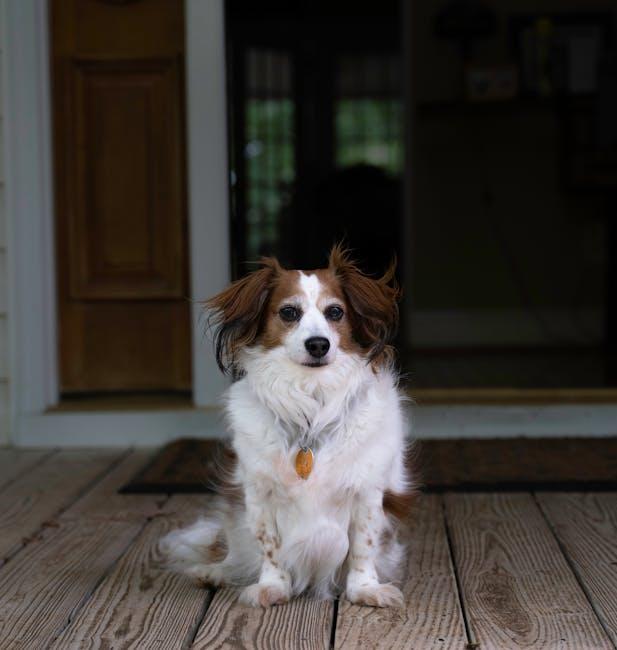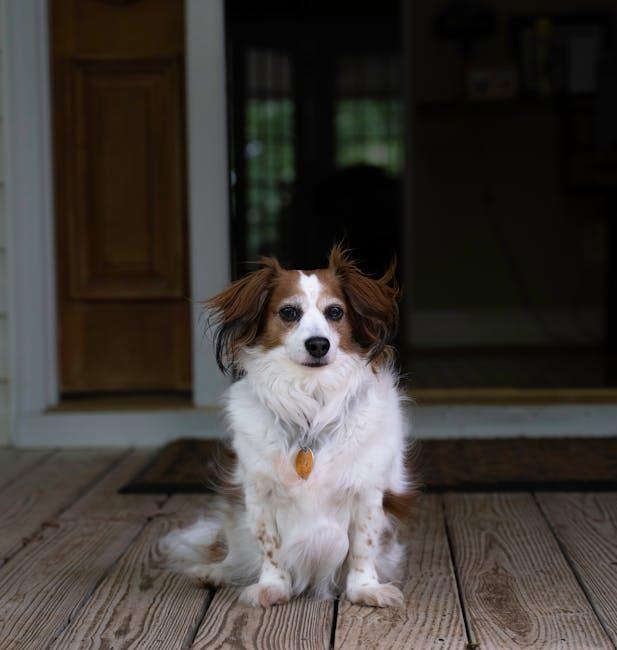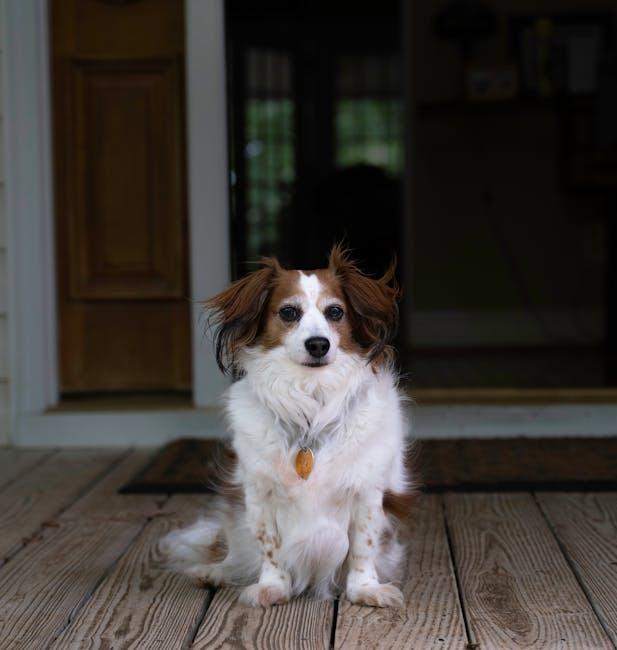In a bustling park, a golden retriever named Max became the star of the day. As children giggled and adults smiled, Max effortlessly spread joy with his wagging tail and gentle demeanor. He approached a shy little girl, nudging her hand with his nose, inviting her to play. Instantly, her laughter filled the air. This heartwarming scene illustrates why golden retrievers are often hailed as the friendliest dogs. Their innate ability to connect with people makes them not just pets, but beloved family members. Choose a golden retriever, and you’ll gain a loyal friend who brings happiness to every moment.
Contents
- Understanding the Traits of the Friendliest Dog Breeds
- Evaluating Temperament and Socialization in Canine Companions
- Top Recommendations for Families Seeking Affectionate Dogs
- Training and Care Tips to Enhance Your Dogs Friendliness
- Q&A
Understanding the Traits of the Friendliest Dog Breeds
When it comes to choosing a canine companion, understanding the characteristics that define the friendliest dog breeds can significantly enhance your decision-making process. These breeds are often characterized by their sociable nature, eagerness to please, and an innate ability to bond with humans and other animals alike. Their friendly demeanor makes them ideal pets for families, singles, and seniors, ensuring that they fit seamlessly into various lifestyles.
One of the most notable traits of these amicable breeds is their **affectionate temperament**. Dogs such as Golden Retrievers and Labrador Retrievers are renowned for their loving disposition. They thrive on human interaction and often seek out companionship, making them perfect for those who desire a loyal friend. Their playful energy and gentle nature allow them to engage positively with children and adults, fostering an environment of joy and warmth.
Another essential characteristic of friendly dog breeds is their **intelligence and trainability**. Breeds like the Poodle and Beagle not only exhibit high levels of intelligence but also possess a willingness to learn and adapt. This makes them easier to train, allowing them to respond well to commands and socialization efforts. Their eagerness to please their owners often translates into a strong desire to be part of family activities, further enhancing their friendly reputation.
Lastly, many of the friendliest dog breeds exhibit a **playful and outgoing nature**. Breeds such as the Boxer and Cavalier King Charles Spaniel are known for their exuberance and love for playtime. Their joyful antics can bring laughter and happiness into any home, making them a delightful addition to family gatherings or quiet evenings. This playful spirit not only endears them to their owners but also makes them excellent companions for other pets, creating a harmonious household environment.
Evaluating Temperament and Socialization in Canine Companions
When considering the friendliest dog breeds, it’s essential to evaluate their temperament and socialization skills. A dog’s temperament is influenced by genetics, upbringing, and environment, making it crucial to understand these factors when selecting a canine companion. Breeds known for their friendly disposition often exhibit traits such as affection, playfulness, and adaptability, which can significantly enhance their interactions with humans and other animals.
Socialization plays a pivotal role in shaping a dog’s behavior. Early exposure to various environments, people, and other pets can help cultivate a well-rounded and friendly demeanor. Dogs that are properly socialized tend to be more confident and less fearful, leading to positive interactions with strangers and familiar faces alike. This is particularly important for breeds like Golden Retrievers and Labrador Retrievers, which thrive on companionship and are often seen as the epitome of friendly dogs.
Moreover, certain breeds are inherently predisposed to being more sociable. For instance, the Beagle, known for its curious nature, and the Cavalier King Charles Spaniel, with its affectionate temperament, are both excellent examples of dogs that naturally gravitate towards human interaction. These breeds often display enthusiasm and eagerness to please, making them ideal companions for families and individuals seeking a loving pet.
Ultimately, while breed characteristics provide a general guideline, individual personality and training are equally important. A dog’s friendliness can be nurtured through consistent positive reinforcement and social experiences. By investing time in training and socializing your dog, you can foster a bond that not only enhances their friendly nature but also enriches your life with a loyal and loving companion.
Top Recommendations for Families Seeking Affectionate Dogs
When it comes to finding the perfect canine companion for your family, certain breeds stand out for their affectionate nature and gentle demeanor. These dogs not only thrive on human interaction but also bring joy and warmth to every household. Here are some breeds that are renowned for their friendly disposition:
- Labrador Retriever: Known for their playful spirit and loyalty, Labradors are excellent family dogs. They are incredibly sociable and love to be involved in family activities, making them perfect for households with children.
- Golden Retriever: With their friendly and tolerant attitude, Golden Retrievers are often considered one of the most affectionate breeds. They are eager to please and are great with kids, making them ideal companions for family adventures.
- Cavalier King Charles Spaniel: This breed is known for its affectionate nature and gentle temperament. They thrive on companionship and are particularly good with children, often forming strong bonds with family members.
- Beagle: Beagles are friendly, curious, and merry, making them a delightful addition to any family. Their playful nature and love for socializing ensure that they fit right in with active households.
In addition to these breeds, it’s essential to consider the individual dog’s personality and upbringing. Many mixed-breed dogs also exhibit affectionate traits and can make wonderful family pets. Visiting local shelters or rescue organizations can lead you to a loving companion who is just waiting for a forever home. Remember, the right dog for your family may not always be a specific breed but rather a unique personality that matches your lifestyle.
Training and socialization play crucial roles in developing a dog’s affectionate behavior. Engaging in positive reinforcement training helps foster a strong bond between your family and your dog. Regular playtime, walks, and family activities will not only keep your dog happy but also enhance their affectionate nature. Investing time in building a relationship with your dog will lead to a loyal and loving companion who is always eager to be by your side.
Ultimately, the most affectionate dog for your family is one that fits your lifestyle and meets your emotional needs. Whether you choose a purebred or a mixed breed, the love and companionship that a dog brings into your home are immeasurable. By selecting a breed known for its friendly disposition and committing to nurturing that bond, you’ll create a loving environment that benefits both your family and your new furry friend.
Training and Care Tips to Enhance Your Dogs Friendliness
To cultivate a friendly demeanor in your dog, consistent training is essential. Start with **positive reinforcement techniques** that reward good behavior. This could include treats, praise, or playtime whenever your dog interacts positively with people or other animals. Establishing a routine that incorporates socialization with various environments, sounds, and people can significantly enhance your dog’s comfort level and friendliness.
Socialization is a crucial aspect of developing a friendly dog. Introduce your pet to different situations, such as parks, pet-friendly stores, and gatherings with other dogs. Gradually expose them to new experiences, ensuring that each encounter is positive. Consider enrolling your dog in **obedience classes** or **puppy socialization groups**, where they can learn to interact with other dogs and people in a controlled environment. This not only builds confidence but also reinforces their ability to behave well in social settings.
Consistency in training commands is vital for fostering a friendly attitude. Teach your dog basic commands such as **sit**, **stay**, and **come**. These commands not only help in managing your dog’s behavior but also create a sense of security for them. When your dog understands what is expected, they are more likely to feel relaxed and friendly in various situations. Regular practice and reinforcement of these commands will help solidify their understanding and responsiveness.
ensure that your dog receives adequate physical and mental stimulation. A well-exercised dog is generally happier and more sociable. Engage in daily activities such as walks, fetch, or agility training to keep their energy levels in check. Additionally, consider incorporating puzzle toys or interactive games that challenge their mind. A stimulated dog is less likely to exhibit anxiety or aggression, paving the way for a more friendly and approachable demeanor.
Q&A
-
What breed is considered the friendliest dog?
While friendliness can vary by individual dog, breeds like the Labrador Retriever, Golden Retriever, and Cavalier King Charles Spaniel are often recognized for their sociable and affectionate nature. These breeds typically thrive on human interaction and are known for their gentle demeanor.
-
Are mixed-breed dogs friendly too?
Absolutely! Mixed-breed dogs can be just as friendly as purebreds. Their temperament often depends on their upbringing and socialization. Many mixed-breed dogs exhibit a wonderful blend of traits from their parent breeds, making them loving and loyal companions.
-
How can I ensure my dog is friendly?
Socialization is key to raising a friendly dog. Expose your dog to various people, environments, and other animals from a young age. Positive reinforcement training and regular interaction with different social settings can help cultivate a friendly disposition.
-
What should I consider when choosing a friendly dog?
Consider your lifestyle, living situation, and the amount of time you can dedicate to training and socialization. Look for breeds known for their friendly nature, but remember that individual personality plays a significant role. Meeting the dog before adoption can help ensure a good match.
while many breeds boast friendly traits, the Labrador Retriever consistently stands out as the epitome of canine companionship. Their unwavering loyalty and gentle nature make them the ideal family pet. Choose wisely, and let love lead the way!

大家好,我是彼得潘,專業的手法身體治療師。我喜歡探索和研究各種主題,並透過與人工智慧的合作分享專業、實用、有趣的文章。我們定期進行人工審核,以確保內容的準確性。如果您發現文章中有任何不準確的地方,請隨時與我們聯繫,我們會及時糾正。您可以透過 [email protected] 與我們聯繫。



